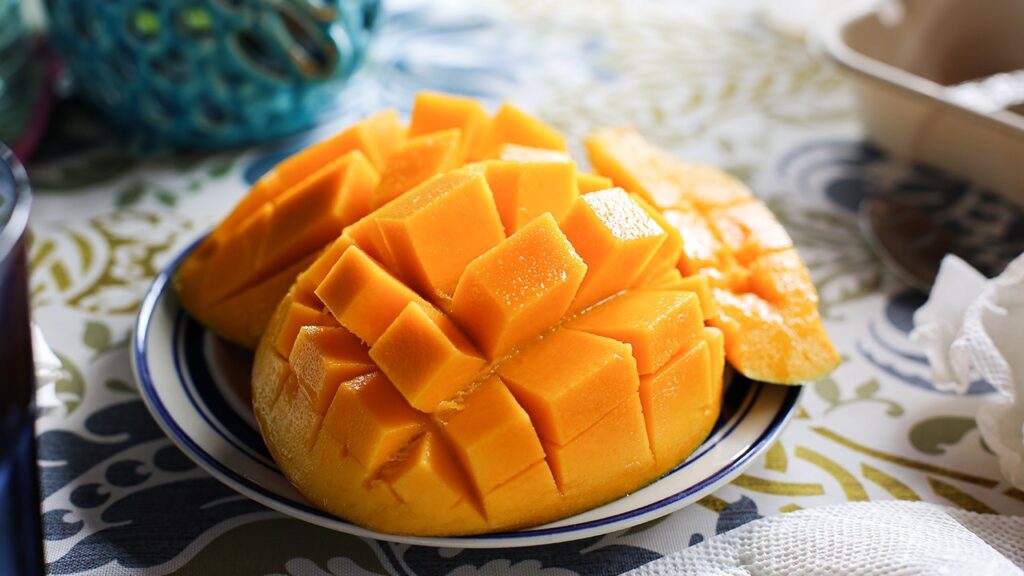by Sharon Asakawa
Before slurping down the juicy, sweet goodness of slices of mango, the following are tidbits of its historical roots in India.

The mango, Mangifera indica, goes by many names from "messenger of fragrance" (Madhuduta) to "embodiment of Cupid"(Kamang), and it has a timeline history of at least 4,000 years.
According to legend, Amrapali was a beautiful dancer in Buddha’s time, and she offered Buddha some mango fruit as a refreshing summer fruit. When worshipping the goddess Saraswati, mango blossoms are believed to be a symbol of life. Even today, archways of homes in India are decorated with mango leaves to celebrate weddings.
From India, the mango was transplanted to South Asia, and eventually the European weaving industry’s oldest pattern, the paisley, was copied from 15th-century Kashmiri shawls with mango leaf motifs. Soon the pattern became so popular that a Scottish town was named Paisley because it produced such large quantities of mango-leaf-patterned shawls. Artists such as Paul Gauguin further immortalized visions of mangos associated with a tropical paradise.
Despite its long and colorful history, the mango fruit itself is what continues to draw “fruit-o-philes.” With more than 500 known varieties, mango lovers can choose from oval, round, oblong and even banana-shapes, as well as skin colors from green to yellow-orange to purple and red. The fruit is ripe when soft to the touch with sweet, juicy, lusciously perfumed golden-orange flesh that is messy or sensual, depending on your viewpoint. Just a squeeze of lime to enhance its flavor and you will be transported to mango heaven!
Despite its long and colorful history, the mango fruit itself is what continues to draw “fruit-o-philes.” With more than 500 known varieties, mango lovers can choose from oval, round, oblong and even banana-shapes, as well as skin colors from green to yellow-orange to purple and red. The fruit is ripe when soft to the touch with sweet, juicy, lusciously perfumed golden-orange flesh that is messy or sensual, depending on your viewpoint. Just a squeeze of lime to enhance its flavor and you will be transported to mango heaven!
ED. NOTE: If you don’t have enough space to grow a full-sized mango tree or are in a cooler climate, there’s hope in the form of condo mango trees. As their name implies, condo mango trees fit well in small spaces and can be maintained at six to ten feet, making them suitable for container growing. They are perfect for greenhouses, suburban backyards, and balconies. The Variety ‘Carrie’ is currently in stock at Top Tropicals.
